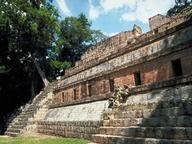Quiz Answer Key and Fun Facts
1. Which of the following shapes best describes a henge?
2. The leaves from which tree inspire a palmette design?
3. Did Roman patricians use the hypocaust to cool their villas in the hot Roman Summers?
4. What is a tell (in archaeology)?
5. A ______________ point. Which French king completes the name of this weapon?
6. Which ancient civilisation is associated with cartouches?
7. Was a lynchet used for executions?
8. Which language gives us the word Kurgan?
9. What was a stele used for in ancient Egypt?
10. What was a bracteate made from?
Source: Author
fiachra
This quiz was reviewed by FunTrivia editor
bloomsby before going online.
Any errors found in FunTrivia content are routinely corrected through our feedback system.

